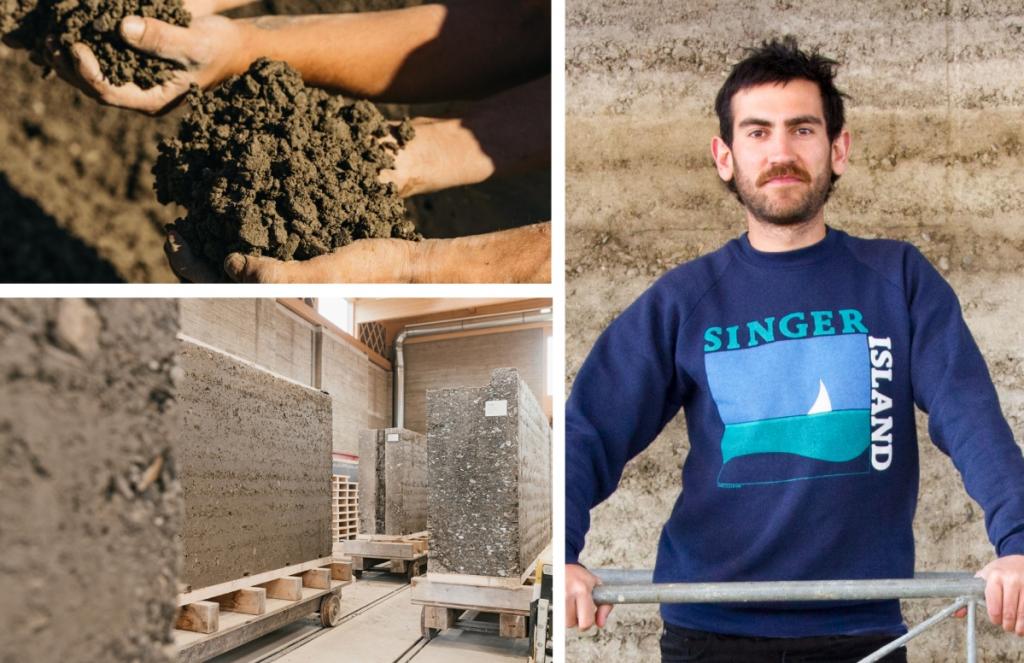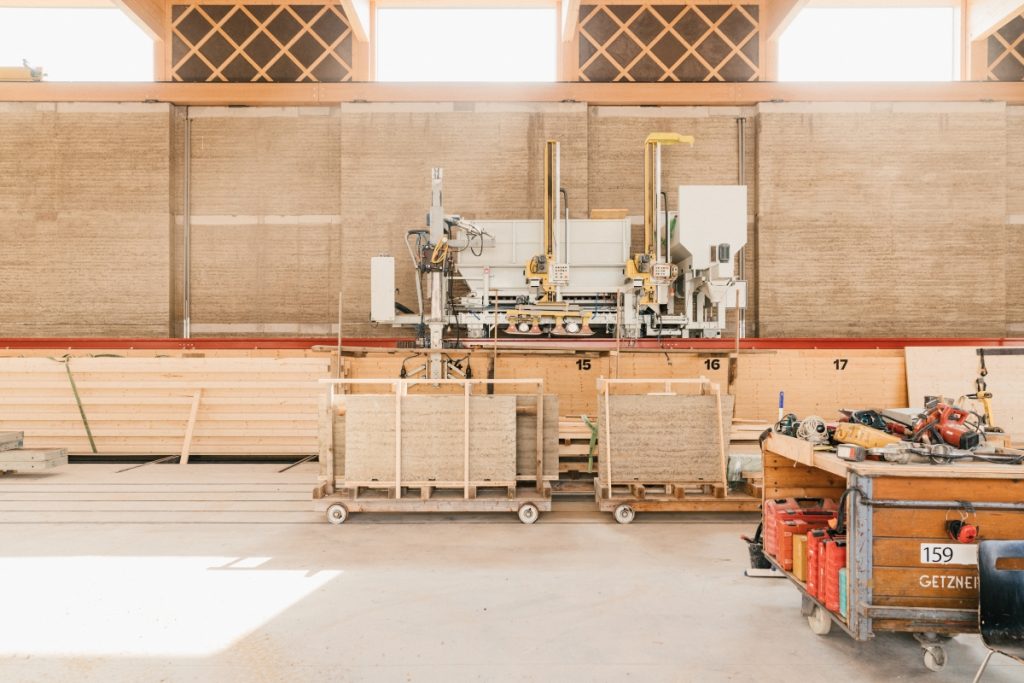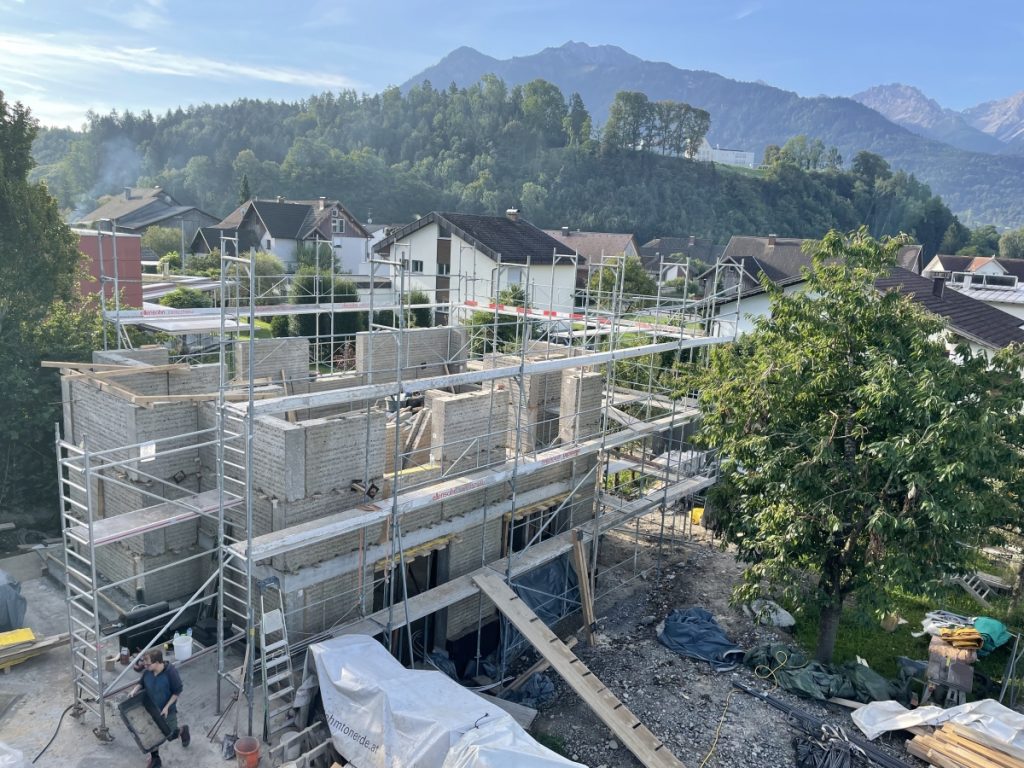There is a construction materials company based in Austria that looks to the forgotten practices of the past for inspiration and Sami Akkach, who works as an architect there, tells us what they have been doing lately.
PURE Walls are Prefabricated Stabilized Rammed Earth elements, giant blocks that can be used to build structural, load-bearing walls. The raw material and the finished blocks have the same composition meaning walls can be crushed and compacted again into blocks, over and over again without loss of quality, without adding material, and with very little processing. They aim to bring this ultimate circular material into modern building practices through prefabrication. By building with rammed earth rather than concrete you eliminate the massive energy requirements needed for cement manufacture and vastly reduce logistical impacts because raw earth is sourced locally.
Also, people benefit from healthier spaces if they live and work in earthen buildings. Rammed earth passively regulates temperature and humidity, decreasing energy loads from heating, cooling, and mechanical ventilation. The material’s dense mass acts as a heat buffer, reducing the extremes in temperature fluctuation indoors. PURE Walls will soak up excess humidity or dampen dry air to an ideal 55% humidity in interior spaces.
 We want to effectively modernize the processes around its production and implementation in order to make rammed earth more competitive in the marketplace, reducing the building industry’s reliance on concrete and steel.
We want to effectively modernize the processes around its production and implementation in order to make rammed earth more competitive in the marketplace, reducing the building industry’s reliance on concrete and steel.
We engage with local craftsmen to create meaningful spaces with earth that people want to live in. This process of co-creation breeds a kind of built form that is engendered with a people’s way of living and aesthetic. Also, we’ve tried to address the relative lack of know-how in rammed earth construction by starting the ERDEN Schule – the Earthen School. Almost every person tacitly understands how you would build something with bricks or how the nature of timber allows you to form structures. This basic understanding is missing for earthen construction. We train university students on-site through internships with rammed earth through practical experience and mentorship.
Rammed earth walls are instantly magnetizing to observers. Enter a room with earthen walls and your impulse is to run your hand across the surface. There’s something primordial about it that draws people. The rich spectrum of clay tones – from pastel yellows and greys to deep ocher reds and browns – can be used to color walls through natural pigments.
 I think some movers and shakers have taken notice and I hope that it leads to some helpful top-down policy. The grassroots community of earthen builders is strong, but we won’t have a meaningful ecological impact without some big players on board.
I think some movers and shakers have taken notice and I hope that it leads to some helpful top-down policy. The grassroots community of earthen builders is strong, but we won’t have a meaningful ecological impact without some big players on board.
PURE Walls are the culmination of 35 years of research and development.The construction sector went so far in the wrong direction in terms of sustainable building practices that it necessitated a rediscovery and a modernization of ancient techniques and materials like rammed earth. Rammed earth is still a common material in the global south. But in Europe, high labor costs almost extinguished its use entirely. It’s to this end that prefabrication became a viable avenue to explore in order to reintroduce rammed earth to the European market.
Anywhere a house is being built, a tunnel is being dug, a road is being laid, and there is excavated material. And from that subterranean waste, the building sector creates comes usable material for rammed earth walls. From our experience, we’ve been able to use at least half of any excavated earth from any building site. You may need to tweak it with a little extra aggregate or clay but essentially the raw materials are there for anyone anywhere to build with rammed earth.
 Our operation can be scaled up, but it doesn’t make sense to build rammed earth elements only in Austria and transport heavy walls all over Europe. The logistical impacts would undo all the environmental gains won by using the material. We are seeing a renaissance taking place for earthen materials and this is leading to increased demand, pushing us to scale up. But we would like to see prefab rammed earth factories dotting Europe.
Our operation can be scaled up, but it doesn’t make sense to build rammed earth elements only in Austria and transport heavy walls all over Europe. The logistical impacts would undo all the environmental gains won by using the material. We are seeing a renaissance taking place for earthen materials and this is leading to increased demand, pushing us to scale up. But we would like to see prefab rammed earth factories dotting Europe.
Rigid building codes mean well but few mention rammed earth and so they stifle efforts to build greener. By nature, using excavated material means rammed earth is hard to standardize. Each site is different and requires assessment. This leads to prolonged processes of testing to guarantee engineering requirements are met or to gain development approval. And then there’s the public perception, people’s trust. If you don’t know anything about rammed-earth architecture, you might think your house will erode away with the next rain shower.
We grapple with all these issues and for a small company like ours, it spreads our resources thin and shifts the price point of the product. However, all these challenges are man-made and not innate to the raw material.
You can read the original article at www.themayor.eu
